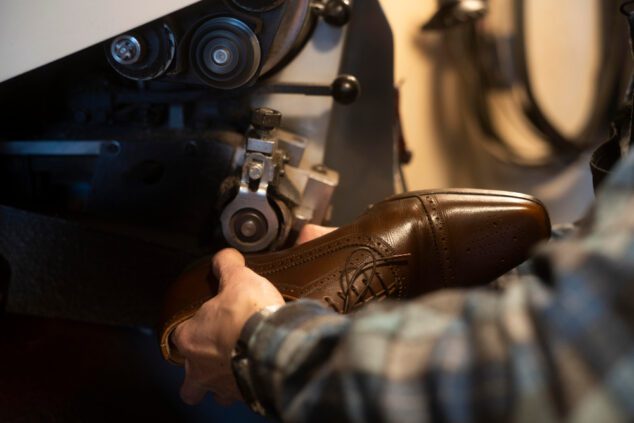When you think of high-quality leather shoes, one name stands out—Agra leather shoes factory. These factories, located in the historic city of Agra, are not just about mass production.
They are about tradition, craftsmanship, and creating something that lasts. The workers here blend old-school techniques with modern tools to produce shoes that never go out of style.
In this article, we will take you inside the world of Agra’s leather shoe factories. You’ll discover how skilled hands shape raw leather into elegant footwear, why these shoes have a global fan base, and how tradition meets innovation in every pair.
The Rich History of Agra’s Leather Industry
Although Agra is well-known for the Taj Mahal, its leather industry is just as impressive. Leather items have been made in the city for generations. For monarchs and nobles, artisans created exquisite leather shoes throughout the Mughal era. That custom has endured and developed over time.
One of the biggest centers for the production of leather shoes in India nowadays is Agra. Thousands of workers are supported by the city’s hundreds of factories and workshops. These workers are artists who continue a legacy, not merely workers.
The Backbone: Skilled Workers
The most valuable asset of any Agra leather shoes factory is its workers. These artisans are often trained from a young age. Many of them learn the craft from parents or relatives. It’s a skill passed down through generations.
Each worker specializes in one part of the shoe-making process. One may cut the leather, another stitches it, while someone else adds the sole. This division of labor allows each shoe to get the attention it needs.
Despite the repetitive nature of the work, the workers don’t treat it like a routine. They put care into every stitch and cut. That’s why Agra-made shoes are so durable and stylish.
Step-by-Step: How Timeless Shoes Are Made
Let’s walk through the process of how these factories create leather shoes that last for years and look elegant for just as long.
1. Leather Selection
Everything starts with selecting the right leather. Workers choose full-grain or top-grain leather because it’s strong and ages well. The leather comes from trusted tanneries, often located in nearby regions.
The leather is checked for texture, thickness, and color. Any flaws are marked and avoided during cutting. This ensures that only the best parts go into the final product.
2. Cutting the Leather
Once the leather is selected, skilled cutters trace patterns onto it. These patterns are templates for the shoe’s parts—like the upper, lining, and tongue. The cutting must be precise because any mistake can ruin the material.
Some factories still use hand tools, while others use die-cutting machines. Either way, accuracy is key.
3. Stitching and Assembly
After cutting, the pieces go to the stitching section. Workers here stitch the upper parts together using strong thread. This step requires both speed and skill. The seams must be tight but clean to ensure durability and style.
The stitched upper is then attached to the insole and the last (a foot-shaped mold). This step shapes the shoe and ensures a comfortable fit.
4. Lasting
In this stage, the upper is stretched and shaped over the last. Workers nail or glue it in place. The shoe stays on the last for a specific period to hold its shape.
This process is crucial because it defines the final look and fit of the shoe.
5. Sole Attachment
Next comes the sole. Agra factories use different types—leather, rubber, or synthetic—depending on the shoe style. The sole is glued or stitched to the bottom of the shoe. Then it goes through pressing machines to ensure a strong bond.
6. Finishing Touches
This is where the magic happens. Workers polish the shoes, add lace holes, fit insoles, and sometimes hand-paint details. Each pair goes through a final quality check to remove any imperfections.
The result? A timeless pair of shoes, ready to walk across the world.
Attention to Detail
What sets an Agra leather shoes factory apart is its attention to detail. Workers take pride in their work. They don’t rush. Every pair is carefully inspected, polished, and packed.
Small things like even stitching, smooth finishing, and proper alignment matter a lot. These details make the difference between an average shoe and a masterpiece.
Some factories also offer custom-made shoes. Customers can choose leather type, color, sole design, and even request engraving. This personal touch adds to the charm of Agra’s craftsmanship.
Tradition Meets Technology
While most of the work is done by hand, many factories now use modern machines to boost efficiency. For example, computer-controlled sewing machines help with uniform stitching. Laser cutters improve precision in cutting leather.
Still, technology never replaces skill. Machines assist, but the final touches always come from human hands.
This mix of tradition and technology keeps Agra ahead in the game. The factories maintain old-world charm while meeting global standards.
Global Reach of Agra Shoes
Agra’s leather shoes are not just popular in India. They are exported to over 60 countries including the US, UK, Germany, and Italy. Many international brands source their shoes or components from Agra.
Buyers trust the quality. They know that behind every shoe is a team of experienced workers and years of tradition.
Even big fashion chains rely on Agra factories for private label production. The shoes may carry a foreign brand name, but their heart lies in Agra.
Sustainable Practices Emerging
In recent years, Agra’s leather industry has started embracing sustainability. Many factories now use eco-friendly tanning processes that reduce pollution. Some use vegetable-tanned leather instead of chemical-tanned ones.
Waste leather is reused to make wallets, belts, and small goods. Solar panels power some factories. Clean water recycling systems are also being installed.
These steps not only protect the environment but also attract eco-conscious buyers worldwide.
Challenges the Industry Faces
Despite its success, the Agra leather industry faces challenges.
- Rising Costs: Leather and labor costs have gone up.
- Competition: Countries like China and Vietnam offer cheaper alternatives.
- Regulations: Environmental laws and export restrictions add pressure.
- Skilled Labor Shortage: Young people often choose other careers, leading to a gap in traditional skills.
Yet, the industry remains resilient. Many factories are upgrading systems and training new workers to keep the tradition alive.
Why Choose Agra-Made Leather Shoes?
If you’re wondering why you should choose shoes from an Agra leather shoes factory, here are a few solid reasons:
- Durability: The quality of materials and craftsmanship makes them long-lasting.
- Comfort: Handmade construction ensures a better fit.
- Style: The designs range from classic to trendy.
- Heritage: Each pair carries the story of Indian craftsmanship.
- Value for Money: You get luxury at an affordable price.
Whether it’s a formal oxford or a casual loafer, you’ll find something unique and reliable in Agra-made shoes.
Final Thoughts
The workers in an Agra leather shoes factory are not just making footwear. They are preserving a legacy. Each shoe is a result of skill, care, and pride. These artisans work quietly behind the scenes, but their creations speak volumes.
In a world full of fast fashion and throwaway products, Agra’s leather shoes remind us that quality still matters. They show that craftsmanship is not dead—it’s alive and well in the lanes of Agra.
So, next time you lace up a pair of leather shoes, take a moment to think about the hands that made them. Chances are, those hands belong to a skilled worker from Agra, who turned a simple piece of leather into timeless footwear.




Hola! I’ve been following your blog for a long time now and finally got
the bravery to go ahead and give you a shout out from Lubbock Texas!
Just wanted to mention keep up the good job!